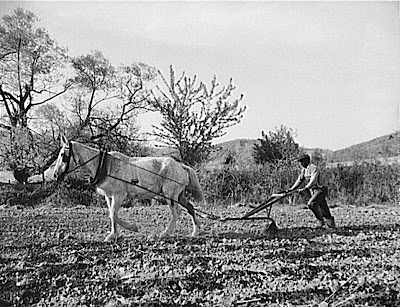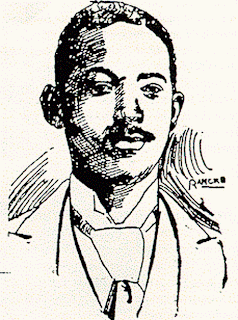Howard University Gallery of Art Presents ‘Reflections: African American Life’ from the Myrna Colley-Lee Collection. Private Collection Reveals the Culture and Identity of African Americans in the 20th Century
WASHINGTON (August 9, 2013) – Howard University is pleased to announce Reflections: African American Life from the Myrna Colley-Lee Collection, an exhibition which honors the lives, traditions, and environments of African Americans in the 20th century. Featuring more than 50 pieces from the collection of renowned costume designer and arts patron, Myrna Colley-Lee, Reflections tells a story of heritage, community, and place. Reflections is on view at Howard University Gallery of Art from Aug. 17 through Oct. 27. The Gallery, located in Childers Hall, is open Monday to Friday, 9:30 a.m. – 5 p.m. and Sunday, 1 p.m. – 4 p.m.
Comprised of paintings, collages, photographs, textile pieces and works on paper, the exhibition is thoughtfully curated to reflect the culture and experiences of African Americans, celebrating their unique style, and providing insight into their Southern roots and migratory history. The imagery in Reflections focuses primarily on narrative works and landscapes of everyday life, past and present. With this multifarious selection, figurative artworks lead viewers on a journey into memory and beyond. Each piece reveals a portion of the inspiring story of the African diaspora that the entire collection portrays.
Leading this exploration are works on paper by prominent African-American artists including Elizabeth Catlett, Gwen Knight, Betye Saar, John Scott and Hale Woodruff. Rural landscapes captured by Maude Schulyer Clay, Gerald DeLoach, Randy Hayes and Tom Rankin are set in contrast with urban landscape paintings by Ernest Crichlow and Rod Ivey. Studio portraits by celebrated photographer James Van Der Zee, and the more candid photography of Roland Freeman, Milly
Moorhead and Eudora Welty, provide a glimpse into the African diaspora. Works by collage masters Romare Bearden and James Denmark, along with a haunting shadowbox construction by postmodernist Radcliffe Bailey, speak to the layered histories and spiritual strength. A rare painting by famed artist Charles White highlights the transformative journey and conveys the quiet wisdom of Reflections.

Charles White, Untitled, c. 1969, oil on canvas. Image courtesy of Ian White.
This collection represents a dialogue between the artists and reflects the attitude and eye of Myrna Colley-Lee—artist and cultural connoisseur with great respect and understanding for the African storytelling tradition. Ms. Colley-Lee is a leading advocate for the arts, an arts patron, and a pioneer costume designer in Black Theatre. Ms. Colley-Lee is currently Chair of the Board of Directors of the Mississippi Arts Commission. She serves on the Acquisitions Committee of the Mississippi Museum of Art and on the Advisory Boards of both the Ogden Museum of Southern Art in New Orleans, and the College of Architecture, Art and Design at Mississippi State University.
Getting her start in the 1960s and continuing to design for regional theatres today, Colley-Lee is credited as one of the foremost costume designers in the Black Theatre Movement. Her work was featured in the exhibition Songs of Social Significance at the Tobin Collection Gallery of the McNay Art Museum in San Antonio in 2012. The exhibition showcased costumes, renderings and collages from plays and a study of her design process. In 2006, following the success of several small regional shows, the Mississippi Museum of Art organized a major exhibition called GladRags: Sketches, Swatches, and Costume Designs by Myrna Colley-Lee. It toured to more than a dozen venues.

Ernest Crichlow, Window, 1980, oil on canvas. Image courtesy of the artist.
Also in 2006, Colley-Lee established the SonEdna Foundation, Inc., an organization that celebrates and promotes literary arts and writers of all genres and backgrounds in the greater Mississippi Delta community, and the world. In her role as founder and president, Colley-Lee travels nationally as an advocate of the literary arts while advancing the cause of her foundation and establishing relationships with other organizations. Believing that people are empowered through the literary arts, her primary vision is to promote the essential value of literature by providing a quality artistic and intellectual environment for writers and the public. The SonEdna Foundation delivers creative and transformative programming in order to develop new writers and readers.
Colley-Lee has received numerous awards, including Honored Artist from the National Museum of Women in the Arts; the Mississippi Institute of Arts and Letters Lifetime Achievement Award; the Exemplary Arts Service Award from the Mississippi Alliance for Arts Education; Outstanding Costume Design from the National Black Theatre Festival; the Wynona Lee Fletcher Award for Outstanding Achievement as a Designer from the Black Theatre Network; among others.
Reflections is organized by International Arts & Artists, Washington, D.C., in collaboration with the office of Myrna Colley-Lee.
Following the showing at Howard, the exhibition is scheduled to tour Alexandria Museum of Art, Alexandria, La. (Nov.1, 2013 – Feb.17, 2014); Lauren Rogers Museum of Art, Laurel, Miss. (Sep. 2, 2014 – Nov. 16, 2014); and Montgomery Museum of Fine Arts, Montgomery, Ala. (Jan. 15, 2015 - March 15, 2015).
The exhibition is co-curated by René Paul Barilleaux and Susan Lloyd McClamroch, who worked together at the Mississippi Museum of Art. Barilleaux is currently the Chief Curator and Curator of Art After 1945 at the McNay Art Museum in San Antonio. Ms. McClamroch is an Independent Curator, who has served at the University of Mississippi as Exhibition Coordinator for the Center for the Study of Southern Culture and at Tougaloo College as Curator of the Tougaloo College Art Collection.
International Arts & Artists in Washington, DC, is a non-profit arts service organization dedicated to increasing cross-cultural understanding and exposure to the arts internationally through exhibitions, programs and services to artists, arts institutions and the public. Visit www.artsandartists.org.
ABOUT HOWARD: Founded in 1867, Howard University is a private, research university that is comprised of 13 schools and colleges. Students pursue studies in more than 120 areas leading to undergraduate, graduate and professional degrees. Since 1998, the University has produced two Rhodes Scholars, two Truman Scholars, a Marshall Scholar, 30 Fulbright Scholars and 11 Pickering Fellows. Howard also produces more on campus African-American Ph.D. recipients than any other university in the United States. For more information on Howard University, call 202-238-2330, or visit the University's Web site at www.howard.edu.
FOR IMMEDIATE RELEASE Media Contact: Rachel Mann Communications Specialist 202.238.2631 rachel.mann@howard.edu http://www.howard.edu/newsroom/
























.jpg)










